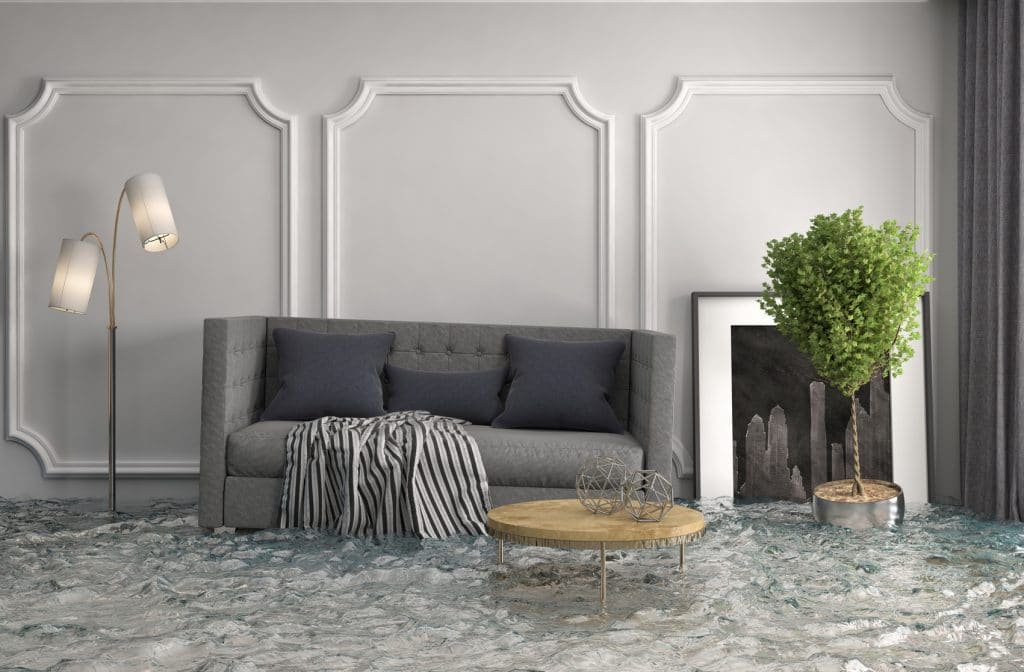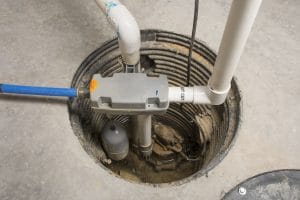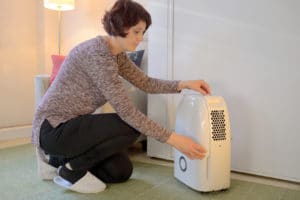How to Prevent Water Damage in Your Basement and Crawlspace

Prevent water damage in your basement and crawlspace is essential.
Nobody gives much thought to their home’s basement and crawl space until something disastrous happens. Imagine yourself dealing with water damage that costs you hundreds of dollars. At this point, you may have regrets about not being able to prevent it. For instance, a flooded crawl space or basement is likely to occur if you reside in a flooded area or if the crawl space is not constructed correctly. Snow, rain, or burst pipes can cause water to pool around your house, causing the wet soil surrounding the foundation to expand and shift and resulting in damage to your home. When this happens, you become at risk of mold development, electrical risks, and structural damage.
Tips for Keeping Moisture Out of Your Crawl Space and Basement
The best approach to safeguard your home’s foundation against water damage is preventative action. You can take the following basic preventive measures.
Install Downspouts Correctly.
The eight-foot rule should be applied when installing downspouts. Install it at least eight feet above the ground and make sure to check that the water does not collect near your home’s perimeter. You can also use a downspout extension to send water further away from your house. This can help in reducing ground saturationSaturation is the point at which a material or environment c... More levels near your property to lessen the chance of foundation and basement leaks.
Keep your sump pump maintained.
A sump pumpA sump pump is a pump installed in a basement or crawlspace ... More works on its own to remove water that rises from the ground before it causes damage in the crawl space or basement. The basement or crawlspace is often where a sump pumpA sump pump is a pump installed in a basement or crawlspace ... More is located. Learn the basics of checking your sump pumpA sump pump is a pump installed in a basement or crawlspace ... More and schedule an annual checkup to help maintain its good performance.

A sump pumpA sump pump is a pump installed in a basement or crawlspace ... More installed in a basement of a home with a water powered backup system.
Consider Purchasing a Dehumidifier
If you have a large basement, open the windows and turn on the fans to help ventilate it. In addition, consider installing a dehumidifierA dehumidifier is a device that removes excess moisture from... More, preferably in a location with easy, convenient drainage. To actively remove moisture from a room, a high-quality under house dehumidifierA dehumidifier is a device that removes excess moisture from... More is an excellent method. Dehumidifiers are particularly effective in dryingDrying is the process of removing moisture from materials, s... More and removing water that has penetrated deep into the materials. It helps to choose dehumidifiers that are built explicitly for crawl areas.
Choose the Appropriate Landscape
Make wise landscaping decisions. Water-loving shrubs can aid in the absorptionAbsorption is the process by which a material takes in or so... More of excess moisture in the soil. A landscaper may recommend plants that are appropriate for your terrain, and determine the appropriate distance between vegetation and your home’s foundation. Ground moisture can be diverted away from your home’s foundation via landscaping. Clay soil, for example, drains more slowly than sandy or rocky soil.
Keep Roofs and Gutters Maintained.
Remove all leaves, moss, branches, and other objects from your roof and gutters. Debris in the drainage system will restrict water drainage and facilitate the growth of moldMold is a type of fungus that grows in damp or humid conditi... More.
Protecting your roof from water damage is crucial. Proper roof, downspout, and gutter maintenanceMaintenance is the routine care, inspection, and repair of a... More will help keep water from getting inside your home.
Before you start clearing your gutters, examine your roof to make sure everything is intact. If something is missing or damaged, seek assistance from a professional. RepairRepair is the act of fixing or restoring damaged property, m... More work done quickly can help lengthen the lifespan of your roof and help prevent water damage in your house.
Use Moisture Barriers
To prevent moisture from seeping into your crawl space, there are specific heavy-duty materials known as vaporVapor is the gaseous form of a substance that is typically l... More barriers that you can use. Covering your crawl space’s floor is effective in preventing dampness. It is always better to lay out moist barriers in continuous stretches. Minor punctures while spreading out the barrier will not be a problem because they only allow a small quantity of moisture to pass through.
Repair and Seal Cracks
It is an invitation for water to enter your crawl space and cause havoc if you have cracks in the floor of your crawl space floor. Inspections should be performed on your space to establish its structural soundness, and any weak sections should be sealed to keep moisture away. Cracks and decaying mortar joints in the walls of your home should be checked out. You should take immediate and effective action to correct any problems you discover.
Use a Fan as an Alternative
A fan might be just as effective as a dehumidifierA dehumidifier is a device that removes excess moisture from... More when your options are limited. Fans used to dehumidify crawl spaces are similar to dehumidifiers and can be set up by inserting it at the crawl space entry and leaving it on for a few hours. The amount of moisture in your basement and crawl space will drop significantly if you do this a few days in a row. This advice is necessary if you want to maintain a dry area or eliminate dampness tremendously. You can purchase all the things you need from local hardware stores or online.
Eliminate the Risk of Pipe Bursting or Freezing
Examine the sealants and insulationInsulation is a material used in buildings to reduce the tra... More in your home, especially in crawl spaces, dryer vents, and basements. Good insulationInsulation is a material used in buildings to reduce the tra... More can prevent pipes from a sudden change in temperature and reduce the risk of freezing. A frozen or busted pipe does not necessarily happen only in a cold environment. Water damage is more likely to happen when the temperature drops quickly or there is insufficient insulationInsulation is a material used in buildings to reduce the tra... More around pipes. When water freezes, expect it to expand and increase the pressure inside the pipe, eventually causing it to explode.
Conclusion
Many people have experienced and witnessed the effects of water damage to their property. Not only does water result in significant damage, but it also gives way to health risks that can affect the entire household. The aftermath of water damage has a significant impact on a person’s stress levels and finances. Knowing its effects, it is important to make sure you prevent it as much as you can. PreventionPrevention refers to actions taken to reduce the likelihood ... More is always better than shelling out a lot of money and investing a significant amount of time and effort into fixing it. If you want to avoid problematic scenarios, make sure to go through each one and tick them off your to-do list.












